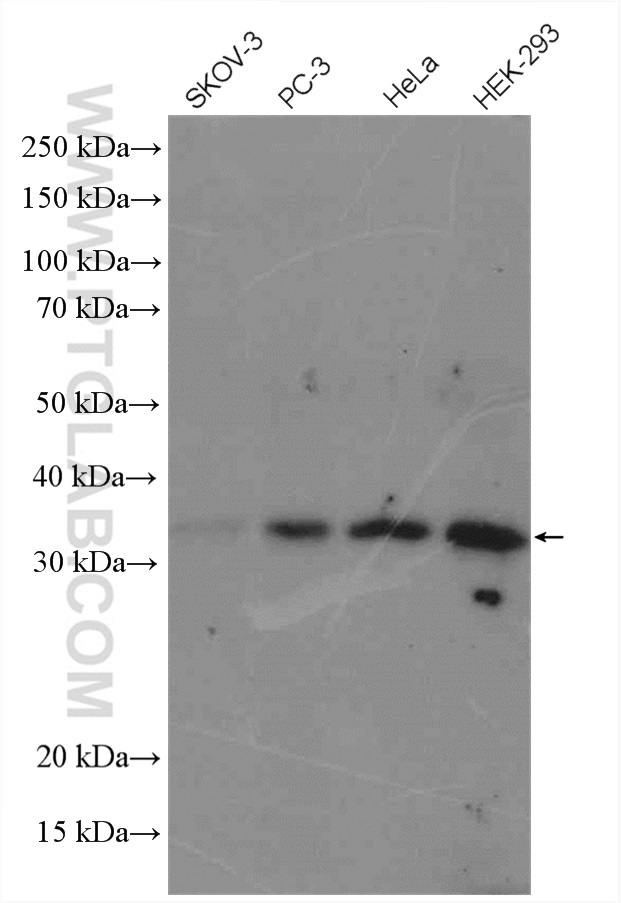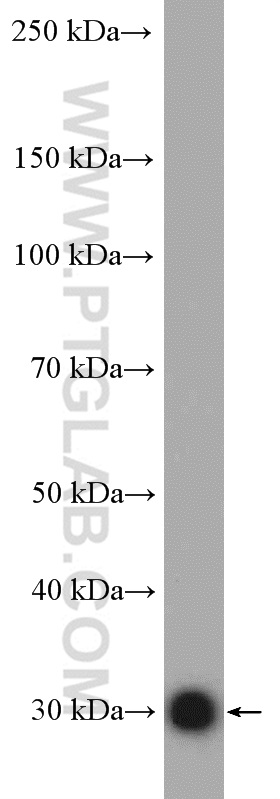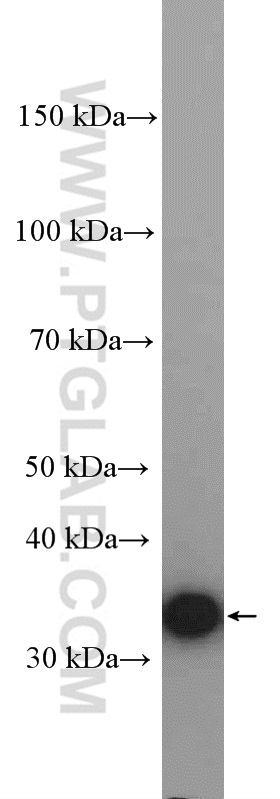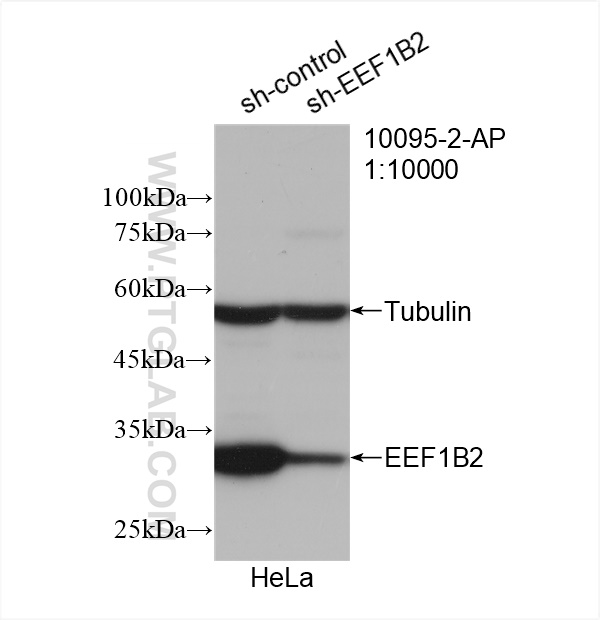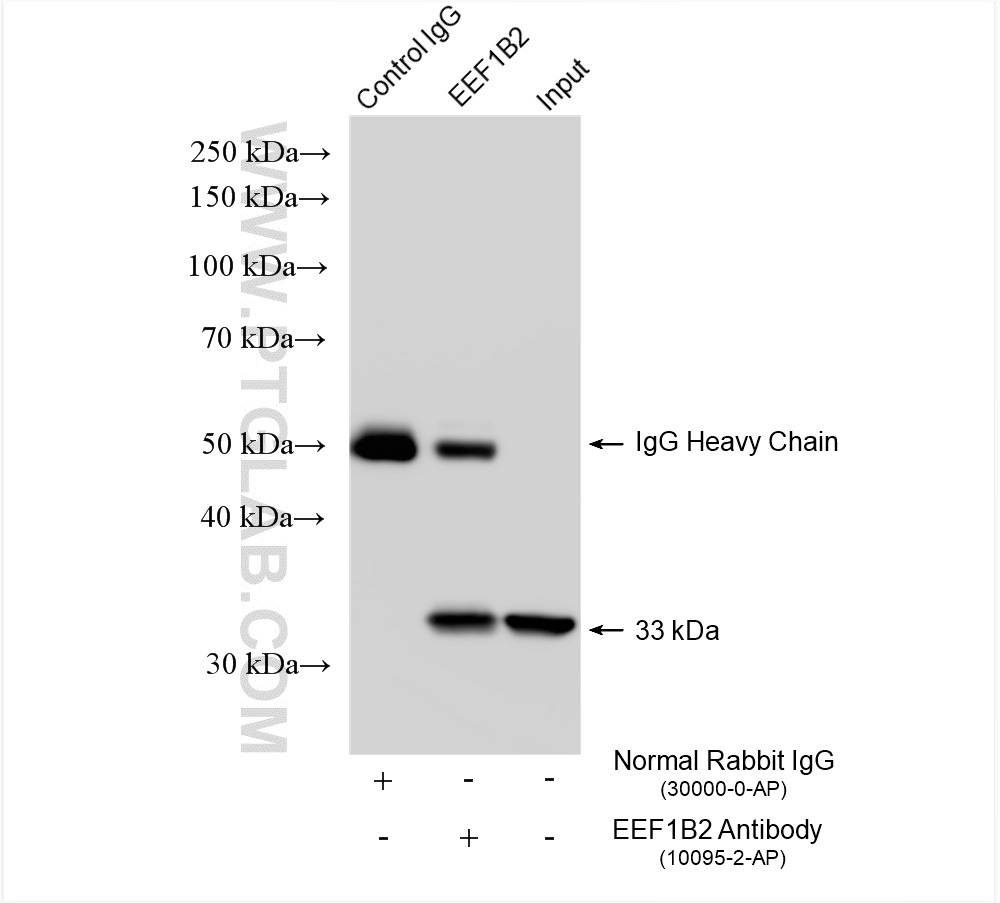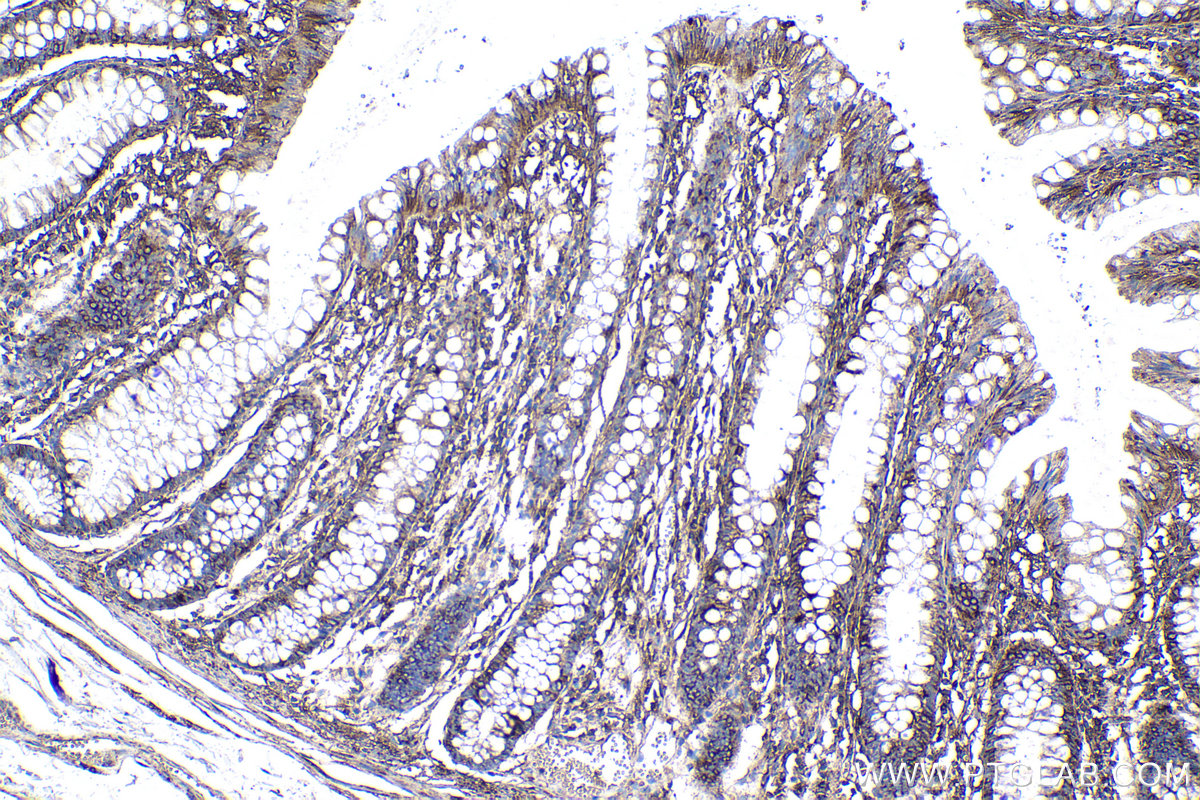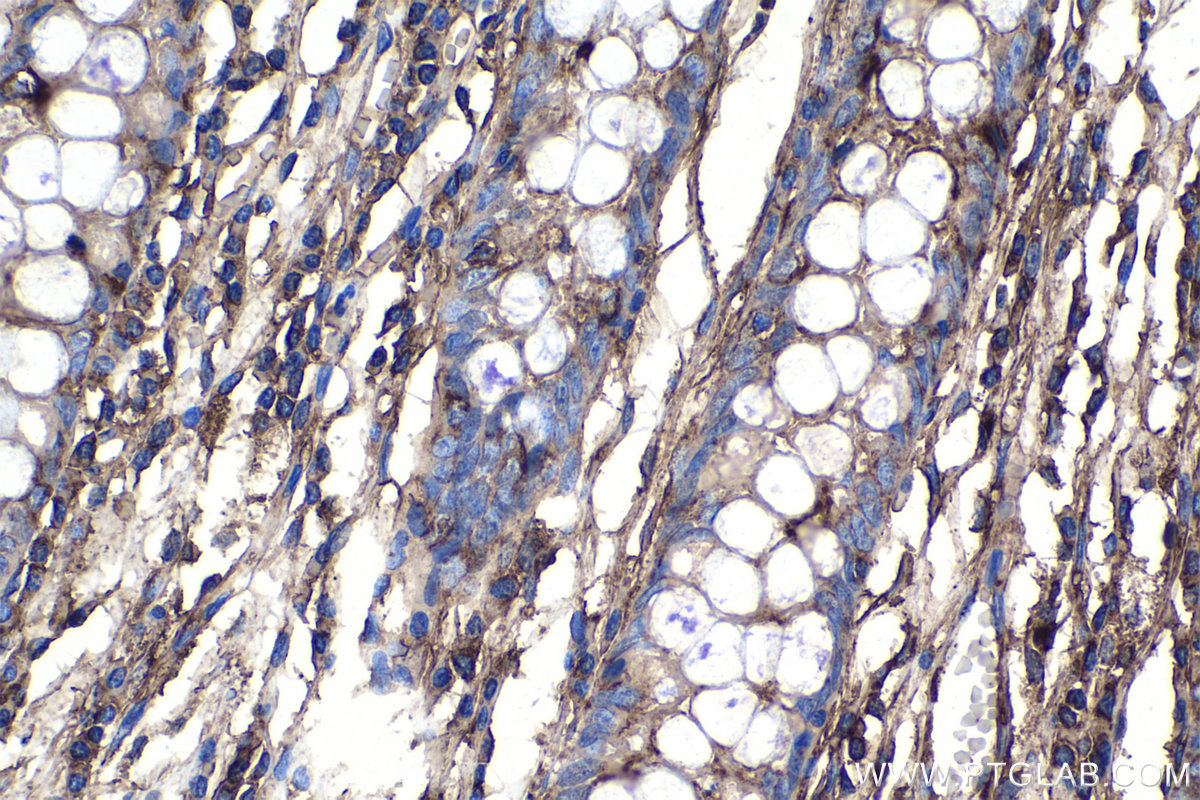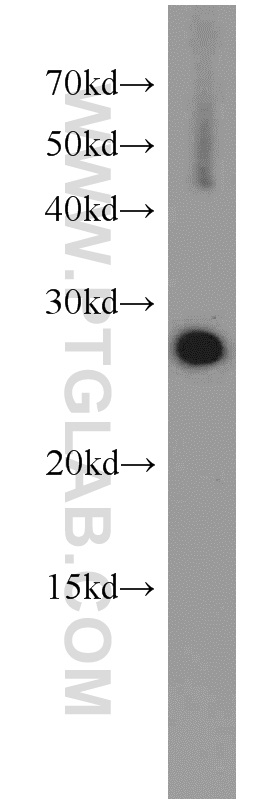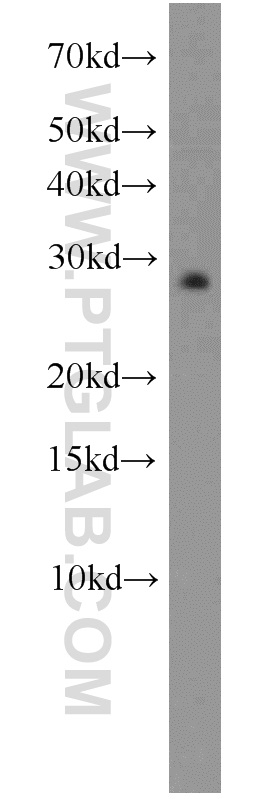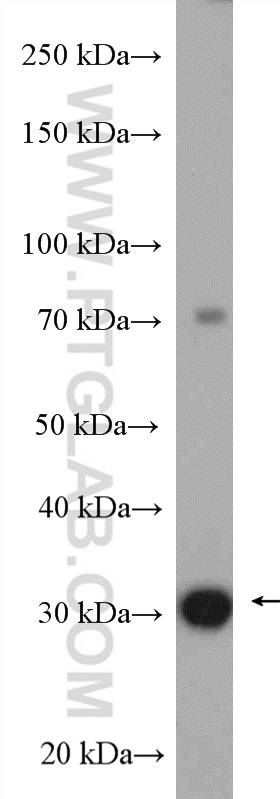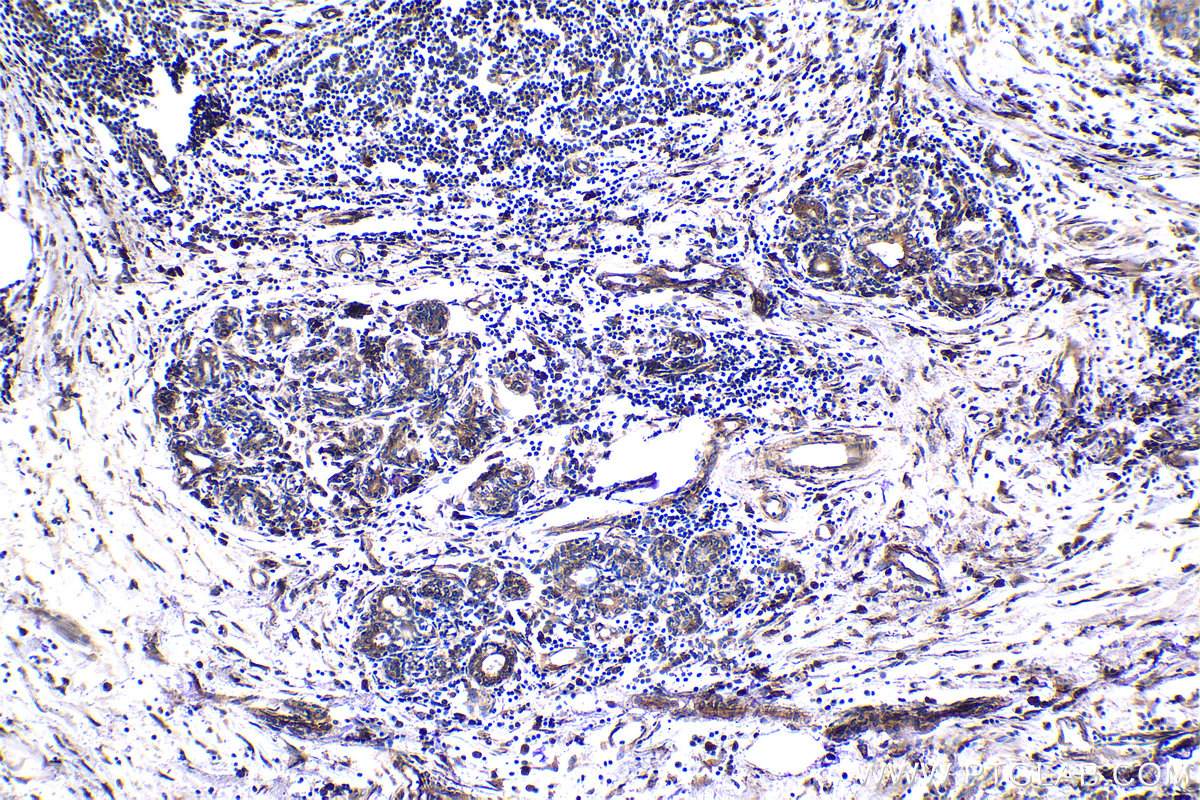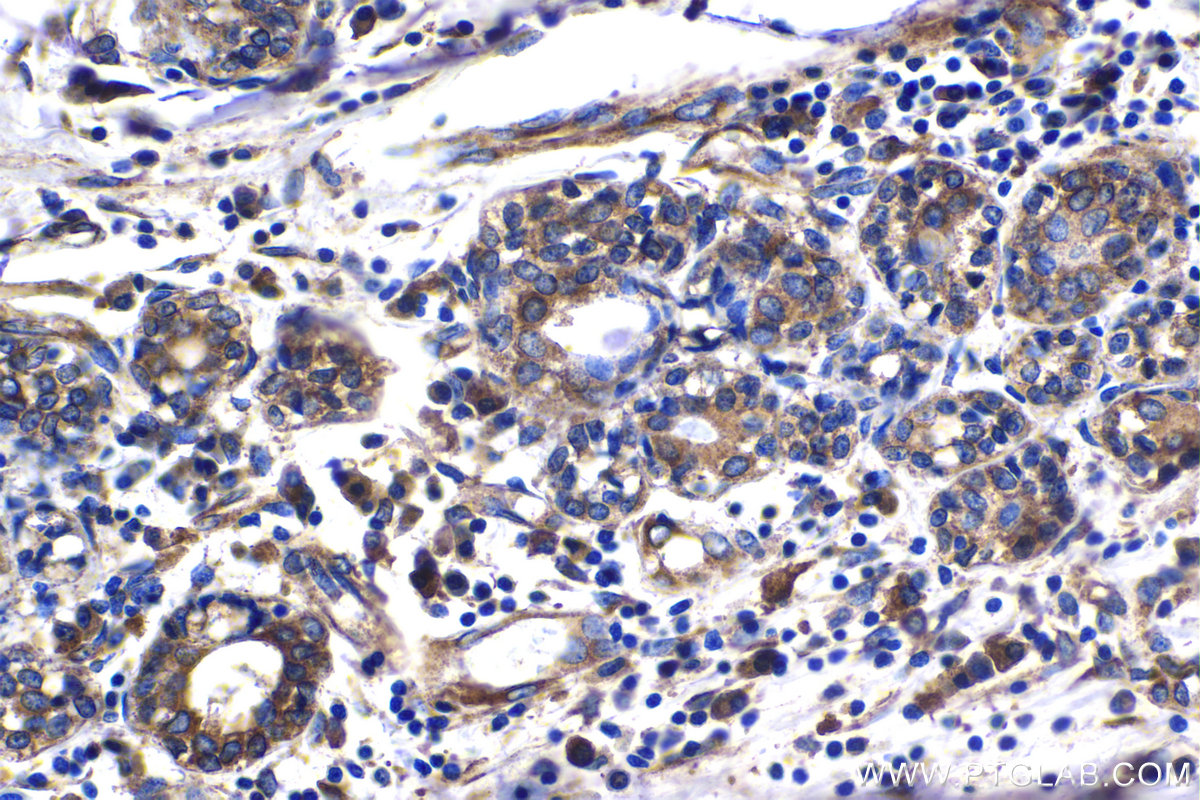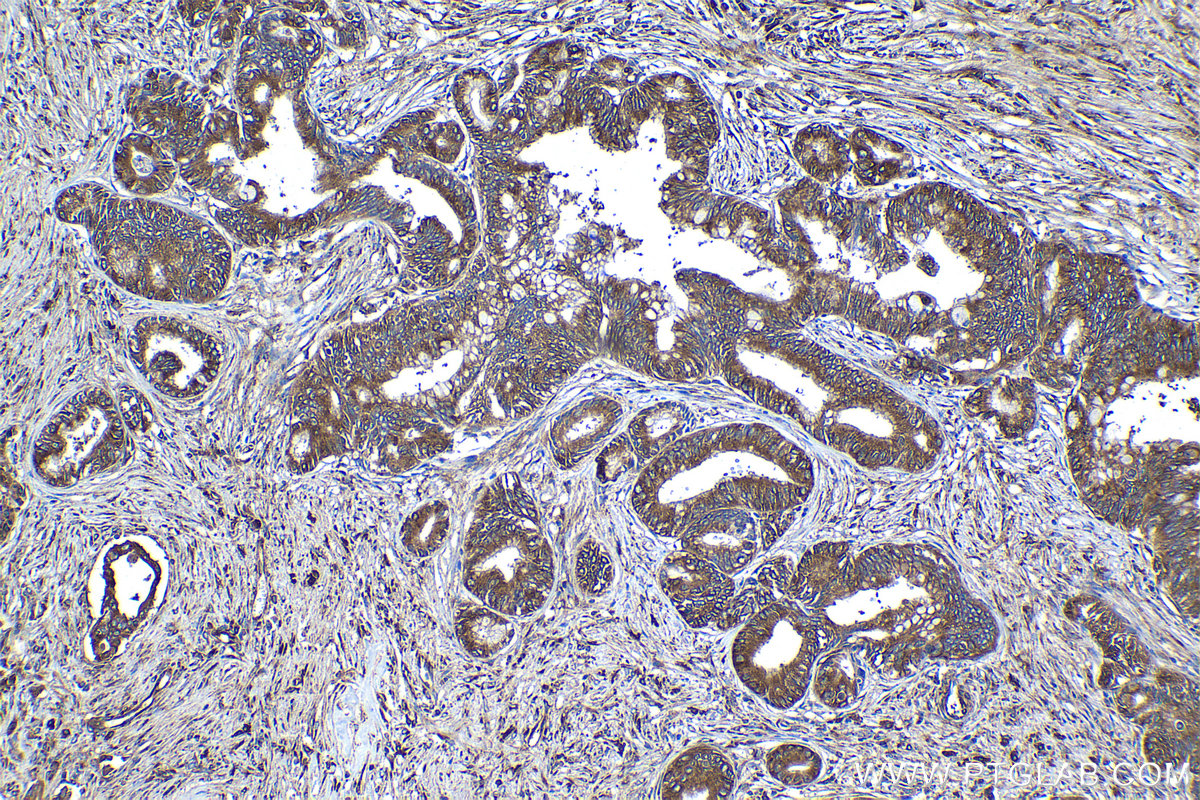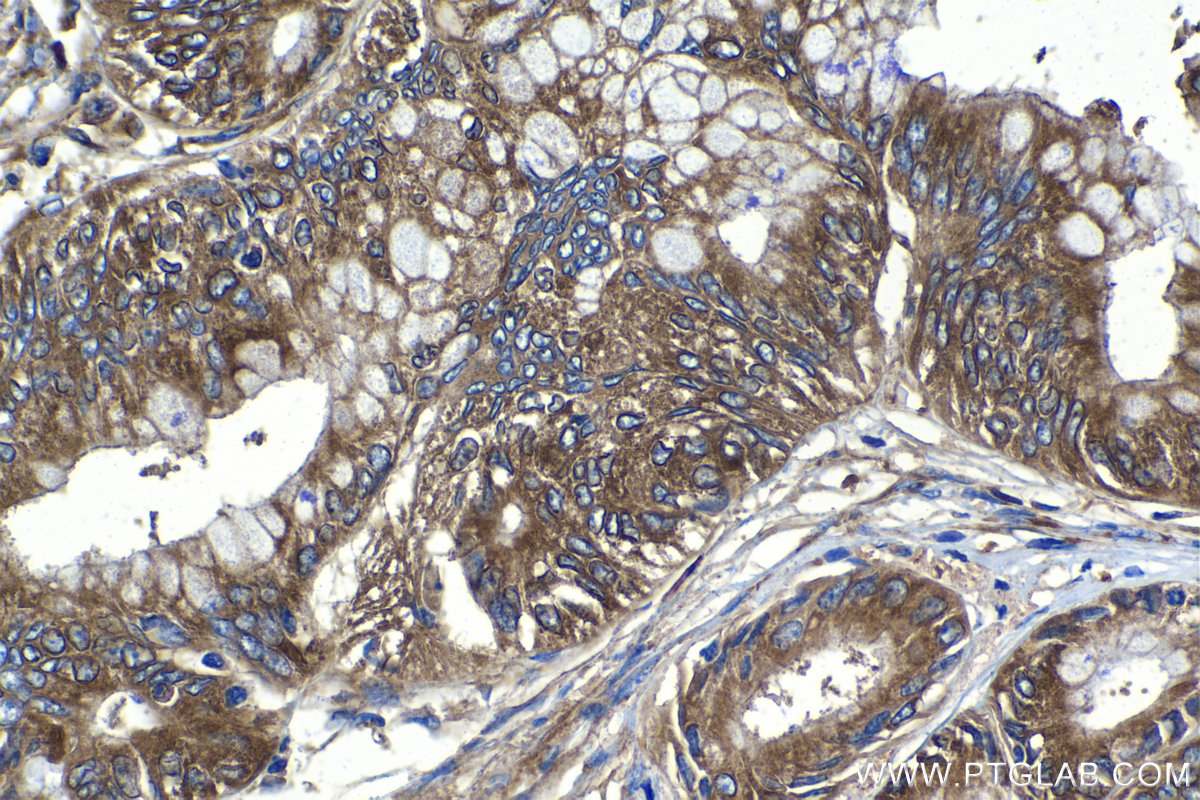验证数据展示
经过测试的应用
| Positive WB detected in | PC-3 cells, RAW264.7, Jurkat cells, HEK-293 cells, HeLa cells, SKOV-3 cells |
| Positive IP detected in | Jurkat cells |
| Positive IHC detected in | human colon tissue, human breast cancer tissue, human pancreas cancer tissue Note: suggested antigen retrieval with TE buffer pH 9.0; (*) Alternatively, antigen retrieval may be performed with citrate buffer pH 6.0 |
| Positive IF/ICC detected in | MCF-7 cells |
推荐稀释比
| 应用 | 推荐稀释比 |
|---|---|
| Western Blot (WB) | WB : 1:2000-1:10000 |
| Immunoprecipitation (IP) | IP : 0.5-4.0 ug for 1.0-3.0 mg of total protein lysate |
| Immunohistochemistry (IHC) | IHC : 1:250-1:1000 |
| Immunofluorescence (IF)/ICC | IF/ICC : 1:50-1:500 |
| It is recommended that this reagent should be titrated in each testing system to obtain optimal results. | |
| Sample-dependent, Check data in validation data gallery. | |
产品信息
10095-2-AP targets EEF1B2 in WB, IHC, IF/ICC, IP, RIP, ELISA applications and shows reactivity with human, mouse, rat samples.
| 经测试应用 | WB, IHC, IF/ICC, IP, ELISA Application Description |
| 文献引用应用 | WB, IHC, IP, RIP, IF |
| 经测试反应性 | human, mouse, rat |
| 文献引用反应性 | human, mouse |
| 免疫原 |
CatNo: Ag0135 Product name: Recombinant human EEF1B2 protein Source: e coli.-derived, PGEX-4T Tag: GST Domain: 1-223 aa of BC000211 Sequence: MGFGDLKSPAGLQVLNDYLADKSYIEGYVPSQADVAVFEAVSSPPPADLCHALRWYNHIKSYEKEKASLPGVKKALGKYGPADVEDTTGSGATDSKDDDDIDLFGSDDEEESEEAKRLREERLAQYESKKAKKPALVAKSSILLDVKPWDDETDMAKLEECVRSIQADGLVWGSSKLVPVGYGIKKLQIQCVVEDDKVGTDMLEEQITAFEDYVQSMDVAAFN 种属同源性预测 |
| 宿主/亚型 | Rabbit / IgG |
| 抗体类别 | Polyclonal |
| 产品类型 | Antibody |
| 全称 | eukaryotic translation elongation factor 1 beta 2 |
| 别名 | Elongation factor 1 beta, EF-1-beta, EF1B, EF 1 beta, EEF1B1 |
| 计算分子量 | 25 kDa |
| 观测分子量 | 30-34 kDa |
| GenBank蛋白编号 | BC000211 |
| 基因名称 | EEF1B2 |
| Gene ID (NCBI) | 1933 |
| RRID | AB_2096987 |
| 偶联类型 | Unconjugated |
| 形式 | Liquid |
| 纯化方式 | Antigen affinity purification |
| UNIPROT ID | P24534 |
| 储存缓冲液 | PBS with 0.02% sodium azide and 50% glycerol, pH 7.3. |
| 储存条件 | Store at -20°C. Stable for one year after shipment. Aliquoting is unnecessary for -20oC storage. |
背景介绍
In eukaryotes, the translation elongation factor eEF1A responsible for transporting amino-acylated tRNA to the ribosome forms a higher-order complex, eEF1H, with its guanine-nucleotide-exchange factor eEF1B. eEF1B consists of three subunits: eEF1B alpha, eEF1B beta and eEF1B gamma. The eEF1B2 possess the nucleotide-exchange activity. Although several models on the basis of in vitro experiments have been proposed for the macromolecular organization of the eEF1H complex, these models differ in various aspects. The human eukaryote elongation factor 1 beta 2 (eEF1B2) migrated as a 30-34 kDa protein in SDS-PAGE. This antibody is a rabbit polyclonal antibody raised against residues near the N terminus of human EEF1B2.
实验方案
| Product Specific Protocols | |
|---|---|
| IF protocol for EEF1B2 antibody 10095-2-AP | Download protocol |
| IHC protocol for EEF1B2 antibody 10095-2-AP | Download protocol |
| IP protocol for EEF1B2 antibody 10095-2-AP | Download protocol |
| WB protocol for EEF1B2 antibody 10095-2-AP | Download protocol |
| Standard Protocols | |
|---|---|
| Click here to view our Standard Protocols |
发表文章
| Species | Application | Title |
|---|---|---|
Nat Cell Biol The MBNL3 splicing factor promotes hepatocellular carcinoma by increasing PXN expression through the alternative splicing of lncRNA-PXN-AS1. | ||
Front Microbiol Strain-Specific Contribution of Eukaryotic Elongation Factor 1 Gamma to the Translation of Influenza A Virus Proteins. | ||
PLoS One Characterisation of Translation Elongation Factor eEF1B Subunit Expression in Mammalian Cells and Tissues and Co-Localisation with eEF1A2.
| ||

